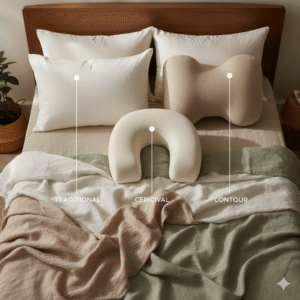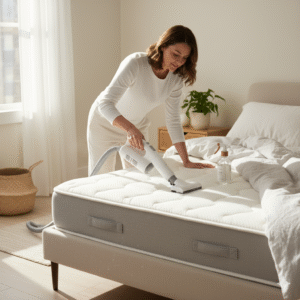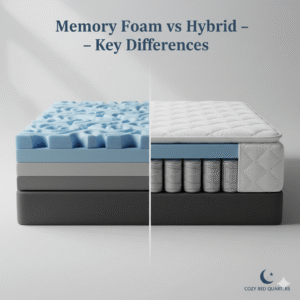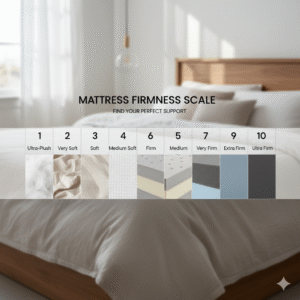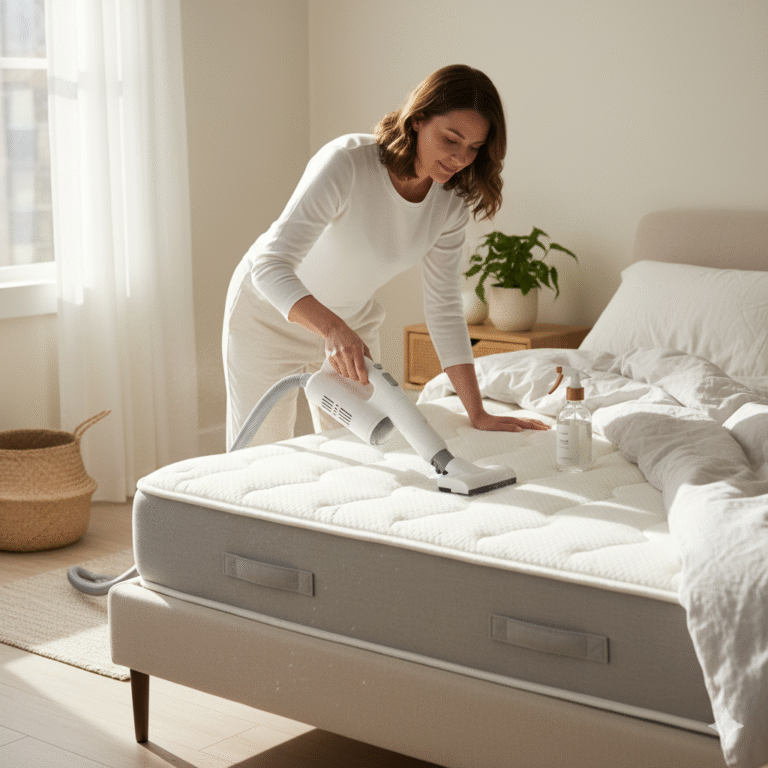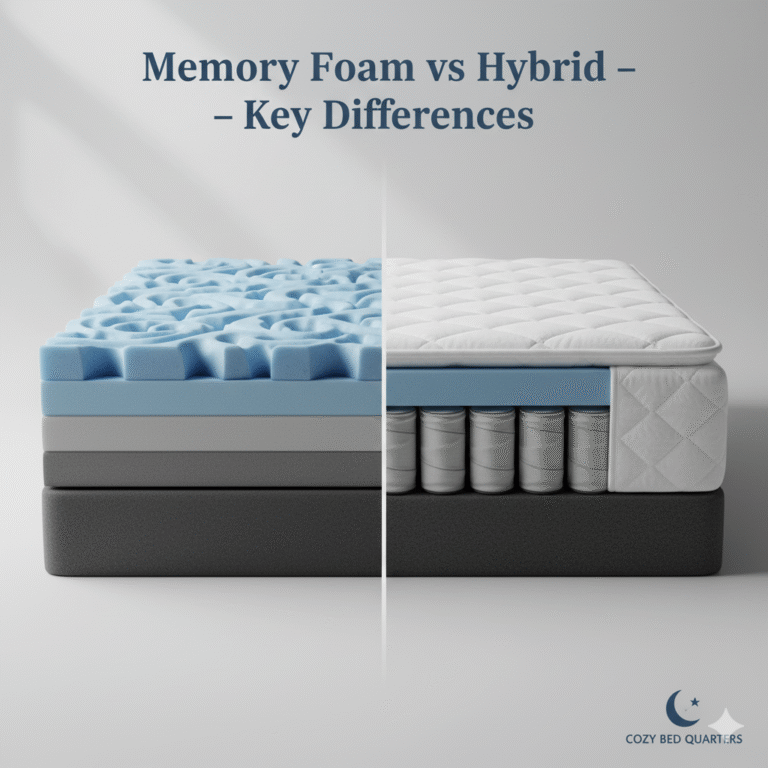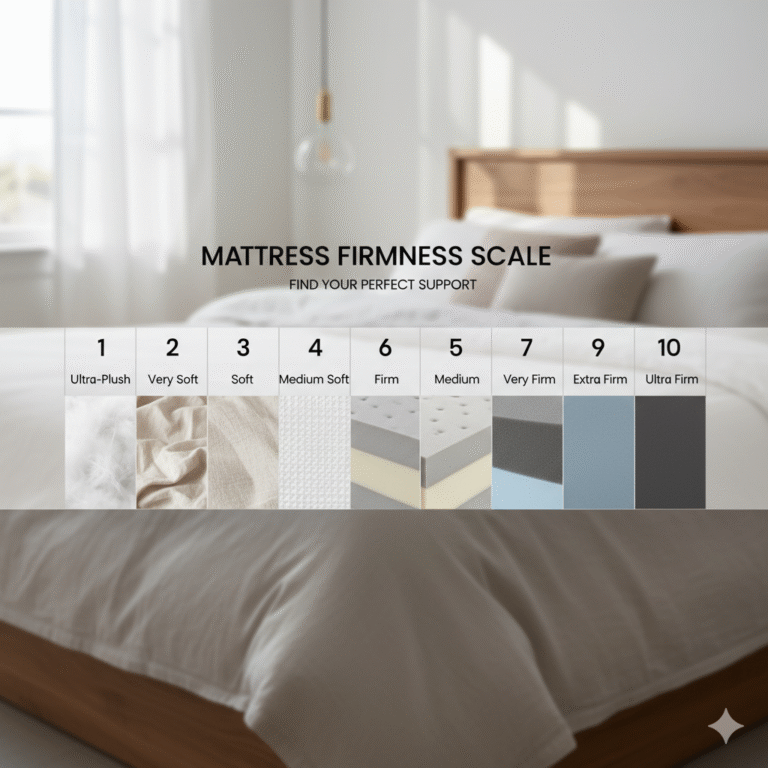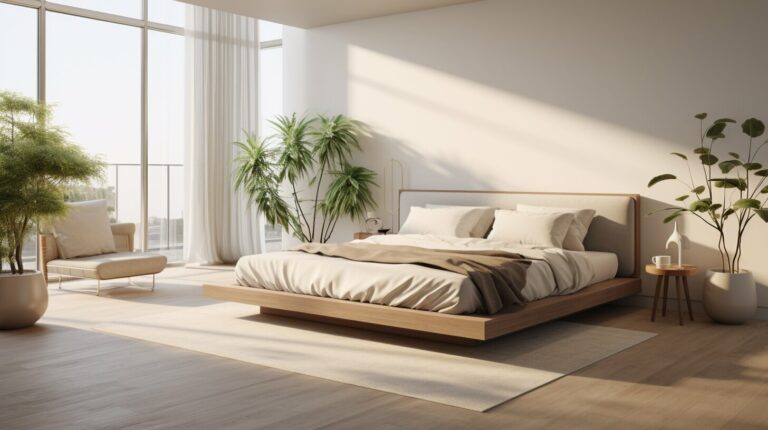Investing in Quality Bedding: 7 Proven Sleep & Health Benefits
Upgrading to high-quality bedding isn’t just a luxury—it’s a smart move. Investing in quality bedding can transform how you rest each night and how you feel each morning.
Key Takeaways
- Investing in quality bedding improves comfort and nightly rest.
- Natural fibers (cotton, linen, bamboo) enhance breathability and durability.
- Premium bedding regulates temperature for year-round comfort.
- Higher upfront cost can pay off through longevity and better health.
The Importance of Quality Bedding
Great sleep starts with the surfaces closest to your skin. Thoughtful choices in sheets, pillowcases, and duvets set the stage for deeper rest and better mornings. If your mattress feels cramped, consider your bed size and sleep quality too.
Impact on Sleep Quality
Premium fabrics offer a soft, supportive feel that reduces toss-and-turn and helps you move through deeper sleep cycles. Research from the Sleep Foundation notes that breathable fibers like cotton and linen promote airflow and steady temperature through the night.
Effects on Overall Well-being
Better sleep supports focus, mood, and physical health. Good bedding reduces irritation, creates a calmer environment, and can help you wake up more refreshed—benefits that ripple into your daytime performance. For bigger-picture sleep health tips, see the CDC’s guidance on sleep and health.

Material Matters in Investing in Quality Bedding
The right fabric mix affects comfort, temperature, durability, and even skin sensitivity. If you’re prone to sneezing or itching at night, review our guide to bedding allergies and symptoms.
Natural vs. Synthetic Fabrics
Natural fibers—cotton, linen, and bamboo—breathe well, wick moisture, and feel great on skin. Cotton balances softness and strength, linen stays cool and crisp, and bamboo offers a silky, eco-friendly hand feel. Synthetics like polyester are durable but can trap heat and humidity, which may reduce comfort for hot sleepers.
Thread Count and Its Significance
Thread count measures threads per square inch. More isn’t always better: for cotton, 300–500 usually hits the sweet spot for softness and airflow. Fiber quality (e.g., long-staple cotton) and weave matter just as much as the number.

The Benefits of Investing in Quality Bedding
Beyond first-night comfort, premium bedding supports better rest, saves money over time, and can even help skin stay happier.
Enhanced Comfort
Well-made sheets, pillowcases, and duvets contour more naturally to your body, easing pressure points and helping you settle faster.
Durability and Longevity
Higher-quality fibers and tighter construction withstand frequent washing without pilling or thinning. That’s why investing in quality bedding saves you money long-term, since it resists wear and tear far better than cheaper alternatives. For timelines by category, see how long bedding typically lasts.
Temperature Regulation
Breathable fibers help you stay cool in summer and cozy in winter—especially when you layer wisely. Here’s how to pick a comforter for every season.
Investing in Your Health with Quality Bedding
Your sleep environment influences respiratory health, skin comfort, and overall resilience. The right textiles keep your bed cleaner and gentler.
Allergy Reduction
Hypoallergenic options like organic cotton and bamboo naturally resist dust mites and common irritants, creating a calmer space for sensitive sleepers. Learn more about sleep and wellness from CDC resources on sleep & health.
Skin Benefits of Investing in Quality Bedding
Softer, breathable fabrics reduce friction and help skin maintain hydration. Many sleepers find fewer red marks and less irritation with silk pillowcases or smooth sateen weaves. For allergy-prone sleepers, investing in quality bedding made from hypoallergenic cotton or bamboo creates a cleaner sleep environment.

Choosing the Right Bedding
Match materials and construction to your sleep style, climate, and care preferences. Small tweaks can deliver big improvements.
Factors to Consider When Selecting Bedding
- Material: Pick for breathability, skin feel, and any allergy needs.
- Weave: Percale = crisp and cool; sateen = smooth with a subtle sheen.
- Fit & Depth: Ensure fitted sheets match your mattress height (especially with toppers).
- Maintenance: Check care labels so your routine preserves softness and shape.
Understanding Different Bedding Types
Sheets, pillowcases, duvets, comforters, and protectors each play a role. Build a cohesive set that balances airflow with warmth, and add a mattress or pillow protector for cleanliness and lifespan. For ongoing hygiene, see how often to wash bedding.
Cost vs. Value of Investing in Quality Bedding
Investing in quality bedding can cost more upfront, but it tends to last longer and perform better—saving money and improving rest over time.
Initial Investment vs. Long-term Benefits
Durable materials keep their feel and appearance after many wash cycles, supporting consistent comfort and sleep quality. That’s value you feel every morning.
Evaluating Cost-effective Options
Shop seasonal sales, compare fiber quality, and favor trusted brands with clear specs. The Sleep Foundation’s best sheets roundups can help you navigate options across budgets.
Final Thoughts
Investing in quality bedding pays off in comfort, health, and long-term value—and Cozy Bed Quarters is here to guide you to the best options for restful sleep. Explore what’s new in innovative sleep technology and build a bedroom that restores you every night.
FAQ
- What materials are best for quality bedding?
- Natural fabrics like cotton, linen, and bamboo are ideal. They’re breathable, soft, and hypoallergenic, making them healthier and more comfortable than most synthetics.
- How do I know if bedding is high-quality?
- Look for reputable brands, durable natural fibers, and—if you’re buying cotton—a thread count around 300–500. Independent certifications and consistently positive customer reviews are also strong quality signals.
- Is premium bedding worth the investment?
- Yes. High-quality bedding lasts longer, feels more comfortable, and supports better sleep. Improved rest boosts daily energy and overall health, delivering long-term value beyond the initial price.
- How often should I replace my bedding?
- Sheets typically need replacing every 2–3 years, depending on usage and fabric. Comforters and duvets can last 5–10 years with proper care, while pillow protectors and mattress protectors should be replaced sooner if worn or damaged.
- Can the right bedding help with allergies?
- Absolutely. Hypoallergenic materials like organic cotton and bamboo resist dust mites and common allergens, helping create a cleaner, healthier sleep environment for sensitive sleepers.
Related reading from Cozy Bed Quarters
- Bed Size and Sleep Quality: Maximize Restful Sleep
- Choose the Perfect Comforter for Every Season
- How to Choose the Best Pillow for Your Sleep Style


